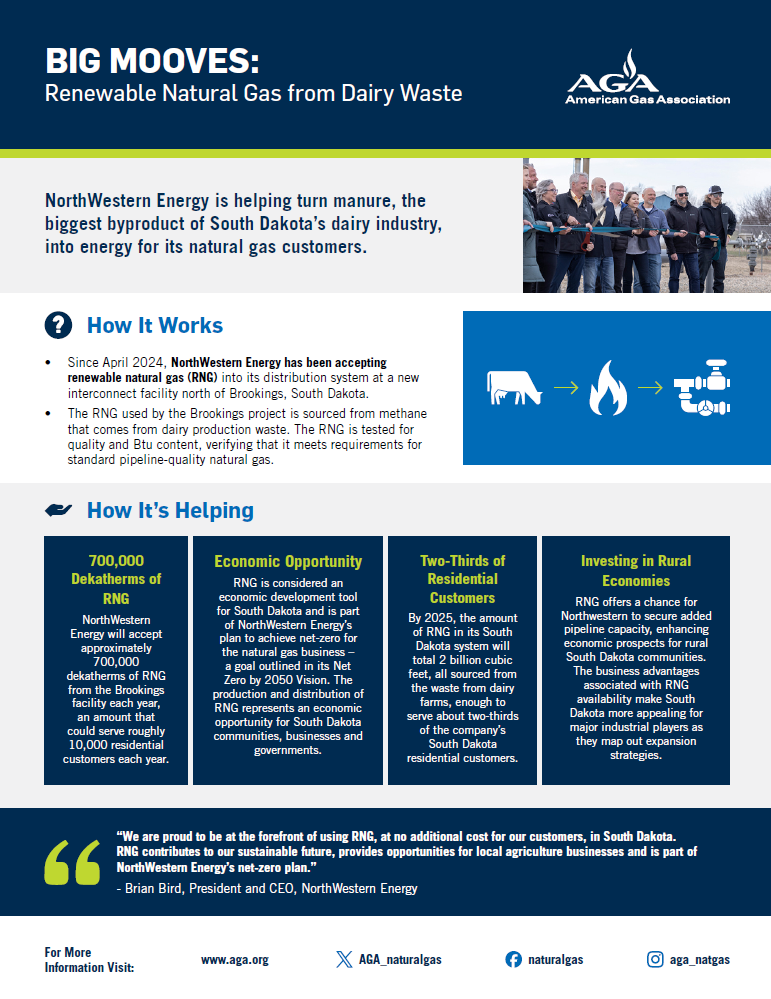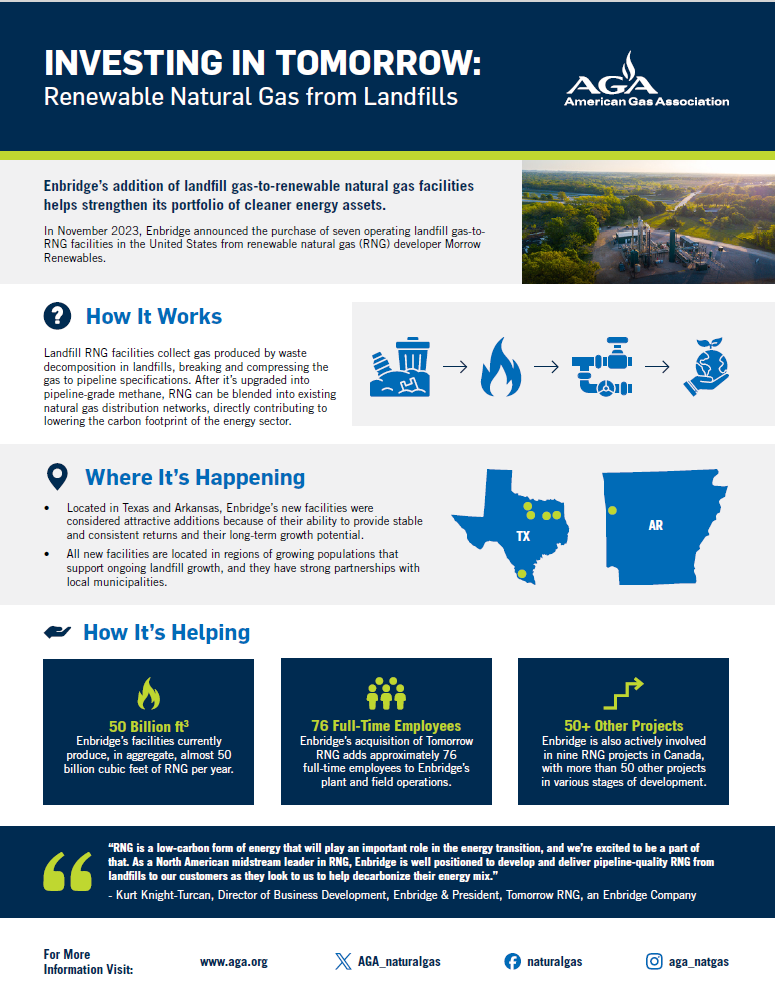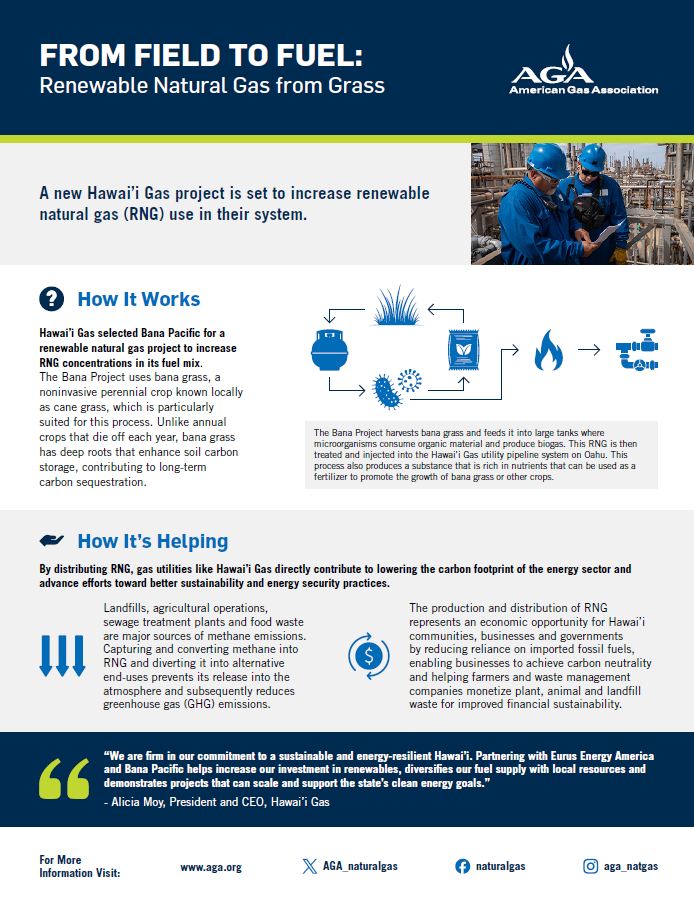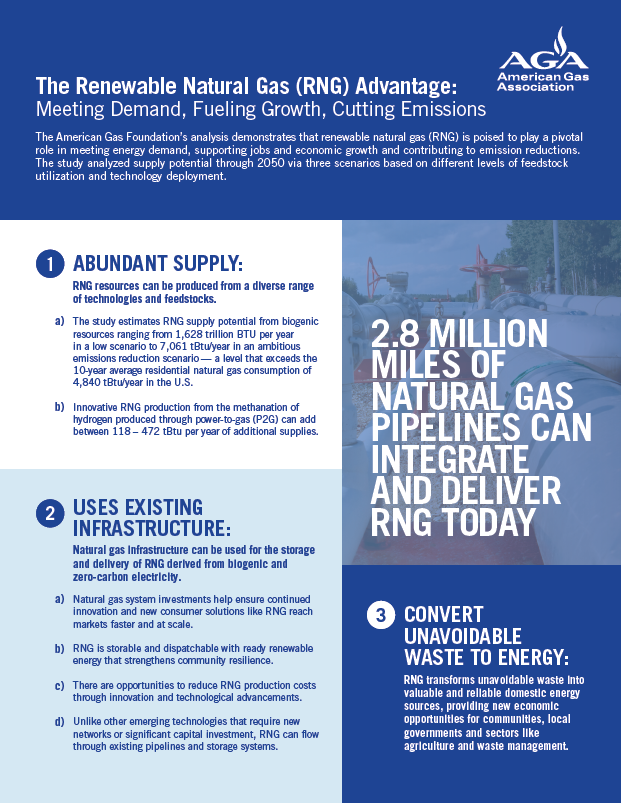The Renewable Natural Gas (RNG) Advantage
The American Gas Foundation’s analysis, “Renewable Natural Gas Supply Assessment,” demonstrates that renewable natural gas (RNG) is poised to play a pivotal role in meeting energy demand, supporting jobs and economic growth and contributing to emission reductions. The study analyzed supply potential through 2050 via three scenarios based on different levels of feedstock utilization and technology deployment.
RNG resources can be produced from a diverse range of technologies and feedstocks. The study estimates RNG supply potential from biogenic resources ranging from 1,628 trillion BTU per year (tBtu/year) in a low scenario to 7,061 tBtu/year in an ambitious emissions reduction scenario – a level that exceeds the 10-year average residential natural gas consumption of 4,840 tBtu/year in the U.S.
Natural gas infrastructure can be used for the storage and delivery of RNG derived from biogenic and zero-carbon electricity. Natural gas system investments help ensure continued innovation and new consumer solutions like RNG reach reach markets faster and at scale. RNG is storable and dispatchable with ready renewable energy that strengthens community resilience. Unlike other emerging technologies that require new networks or significant capital investment, RNG can flow through existing pipelines and storage systems.
RNG transforms unavoidable waste into valuable and reliable domestic energy sources, providing new economic opportunities for communities, local governments, and sectors like agriculture and waste management.
A typical new home with natural gas can save up to $7,500 over 15 years compared to an all-electric home. Modest RNG additions (12% to 20%) competitively reduce emissions compared to all-electric homes while allowing natural gas households to retain up to 81% of these cost savings.
RNG delivers greenhouse gas emissions reductions without forcing households into more expensive electric equipment.
RNG in action
RNG is produced from renewable, domestic sources like farms, wastewater, landfills and even hydrogen and captured carbon, representing a reliable and long-term American energy solution. Many AGA members have committed to incorporating RNG into their energy systems, providing reliable and renewable energy to families and communities across the country.

Big Mooves: NorthWestern Energy
NorthWestern Energy is helping turn manure, the biggest byproduct of South Dakota’s dairy industry, into energy for its natural gas customers. Since April 2024, NorthWestern Energy has been accepting renewable natural gas (RNG) into its distribution system at a new interconnect facility north of Brookings, South Dakota.

Investing in Tomorrow: Enbridge
Enbridge’s addition of landfill gas-to-renewable natural gas facilities helps strengthen its portfolio of cleaner energy assets. In November 2023, Enbridge announced the purchase of seven operating landfill gas-to-RNG facilities in the United States from renewable natural gas (RNG) developer Morrow Renewables.

From Field to Fuel: Hawaiʻi Gas
A new Hawaiʻi Gas project is set to increase RNG use in their system. Hawaiʻi Gas selected Bana Pacific for a renewable natural gas project to increase RNG concentrations in its fuel mix.
Renewable Natural Gas Supply Assessment
This American Gas Foundation study updates and expands on the 2019 AGF assessment of renewable natural gas (RNG), which is derived from biomass or other renewable resources and is a pipeline-quality gas that is fully interchangeable with conventional natural gas. The study incorporates a revised assessment of supply potential, recent advancements in technology, and shifts in policy landscapes.

